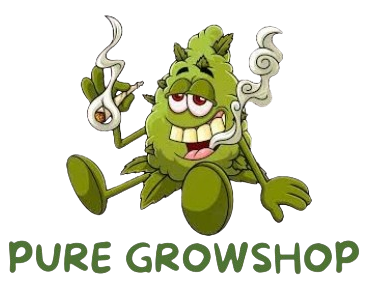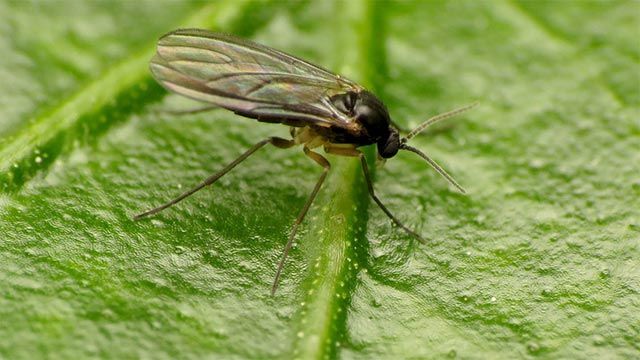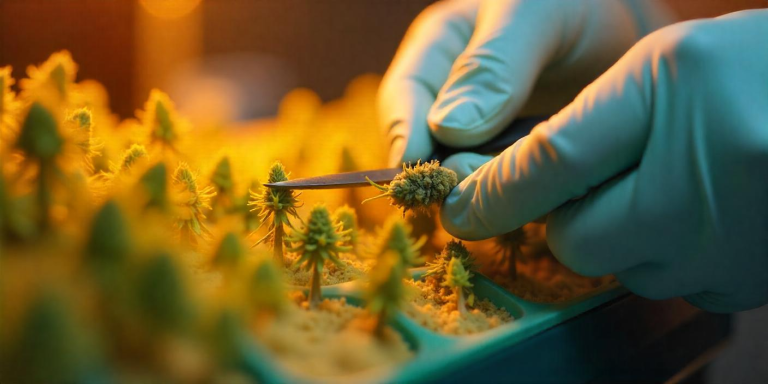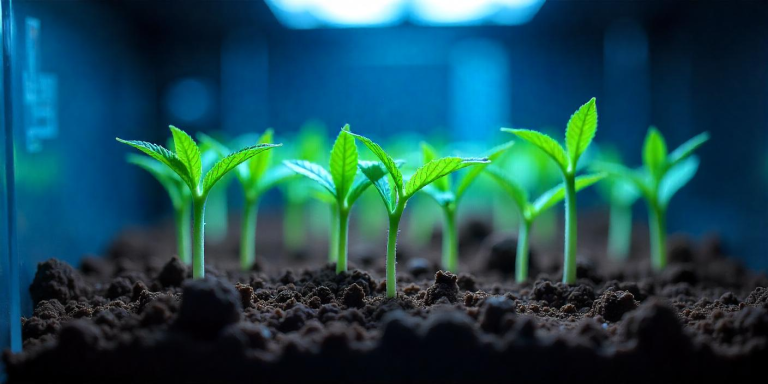Earth is the biological environment that gives life to many bugs or insects, this healthy environment for them allows them to be fed, grow and reproduce. Some bugs are of great help in the growth process of a plant, but others not so much, that is why we must many times get rid of a couple of them and that is where we ask ourselves: how to eliminate the bugs from the land of plants?
To answer this question we must first determine and identify that bugs are present in the land of our plants to be able to eliminate those that are not contributing anything, let's see how to do it.
Types of bugs present in the land of plants
There are a lot of insects or bugs that live in our plants, surely when we may have changed substrate or earth the plants and we turn our pot we see how different bugs from the earth come out. There are some very beneficial and others not so much.
Good bugs for the land of plants
Surely the first one that comes to mind is the earthworms and that is that these are probably the ones you find most in a plant. They excavate tunnels that improve aeration and drainage, and at the same time decompose organic matter, releasing nutrients in different forms but that the roots can easily absorb them.
In fact, of these is achieved by humus and is one of the best natural fertilizers that exist for plants.
We also have soil coleoptera on earth that are beneficial beetles that help in the process of decomposing plant matter. Other predatory species, such as carabids, who feed on larvae of pests, slugs or harmful insect eggs are good for the land of plants.
But not everything is benefit in the world of insects living in the land of plants, there are others that are not so good.
Bad bugs for the land of plants
You already know the good ones for your plant, but there are some that you may have seen and are very harmful to the earth, especially in marijuana plants.
If in your land you find the fly of the mulch or fungus gnat is not good , these insects feed on organic matter, but if the population is high, they also attack the tender roots, making it difficult for the development of the plant.
The soil worm or white worm, which is actually the larva of some beetles such as blind chicken live on earth and feed on roots, which weakens the plant from below . They are difficult to detect because they live hidden, but you can notice them if the plant withers without apparent reason and the ground is loose.
There are also the mosquito larvae of the fungus that live in the wet earth, adults are not problems, but the larvae can damage young roots and transmit fungal diseases to the plant such as Pythium or Fusarium.
Without a doubt, the earth is an ecosystem to give life to a countless amount of bugs. But everything is not lost, it is possible to eliminate them, let's see several methods to achieve it.
Methods to eliminate bugs from plants
The first thing you should keep in mind is that eliminating these bugs is a continuous process and you will not have results from one day to another. There are many methods, but here we show you the most effective.
Remove with biological control
To start eliminating the bugs from the earth, the first thing is biological control. This method consists in using other insects and microorganisms that are beneficial and that completely eliminate the harmful ones.
One widely used is the nematodes these are introduced into the earth or substrate by irrigation. After they are placed they seek and destroy pest larvae such as substrate fly or soil worms.
Other used microorganisms are predatory mites, which patrol the surface layer of the earth devouring eggs and insect larvae. The best thing about this method to eliminate is that it is totally biological and does not damage other bugs that live in the land of your plant.
Homemade and natural remedies
If you do not like those aggressive chemicals, home and natural remedies are the best option to get bad bugs out of the earth. For example, Neem oil This powerful oil obtained from a tree functions as an insecticide and fungicide at the same time.
You can dilute it in water and get it with the irrigation that you usually do, the Neem penetrates the substrate and affects the life cycle of the pests without damaging the roots.
Other natural remedies based on garlic or infusion of chamomile, which have antimicrobial properties and act as soft repellent. Even something as simple as sprinkling cinnamon on earth can help you maintain fungi and insects at bay.
Bicarbonate and potassium soap, prepared in small doses can clean the surface of the substrate without affecting its balance. If any of these methods are not working, then you will have to resort to more specialized products.
Insecticides, chemicals and specialized products
Although it should not be your first option for the damage they cause to other elements of the environment and us as humans, you don't want to lose your plant. That is why you can use to eliminate bugs from the land insecticides, chemicals and specialized products.
Among the most used chemicals are those that contain pyrethrins that immediately act on insects on Earth. There are also systemic, such as those containing imidacloprid, they penetrate the roots and are distributed throughout the plant. This makes them extremely effective against sucking insects such as aphids or cochinillas that live on earth. However, you have to be very careful with the use of this type of products because of the damage they can cause mostly in edible plants. The most advisable thing is to perform previous care to prevent the earth from generating unwanted bugs. How can you achieve this?
How to prevent bugs from reproducing on earth?
Although the methods to eliminate them are effective, the root of the problem when we have excess bugs on land comes from cultivation conditions. And it is that no treatment or method to eliminate will be durable if you do not correct this.
For example, irrigation is crucial since a land that is constantly wet by irrigation becomes the paradise of larvae, substrate flies and other invaders.
If when you water your plants you let dry the upper layer between irrigation, you help cut the life cycle of many insects. Use perlite, sand or vermiculite at the top of the earth is also useful because it creates a physical barrier that prevents pests from putting eggs and falling to the earth.
The earth is the base, it is the vitamin, it is the home of your plant so eliminates as soon as possible the bugs that cause damage to protect your plant and allow it to grow healthy, leafy and provide the result you want.







